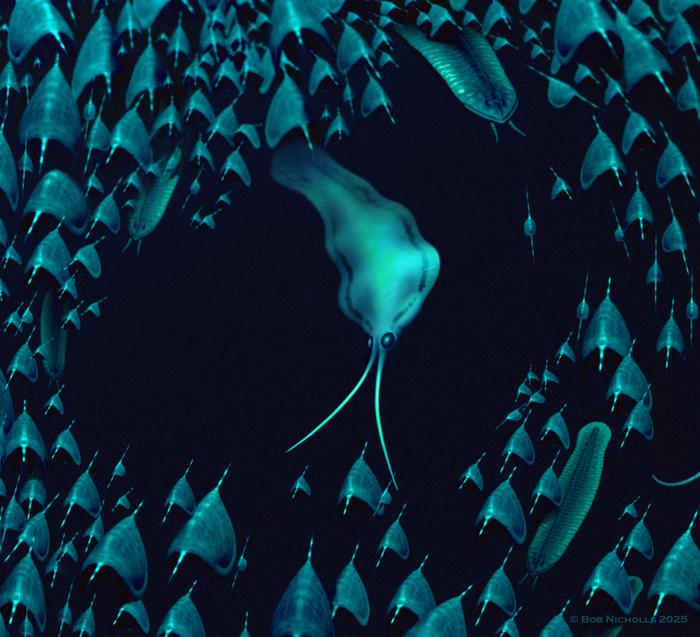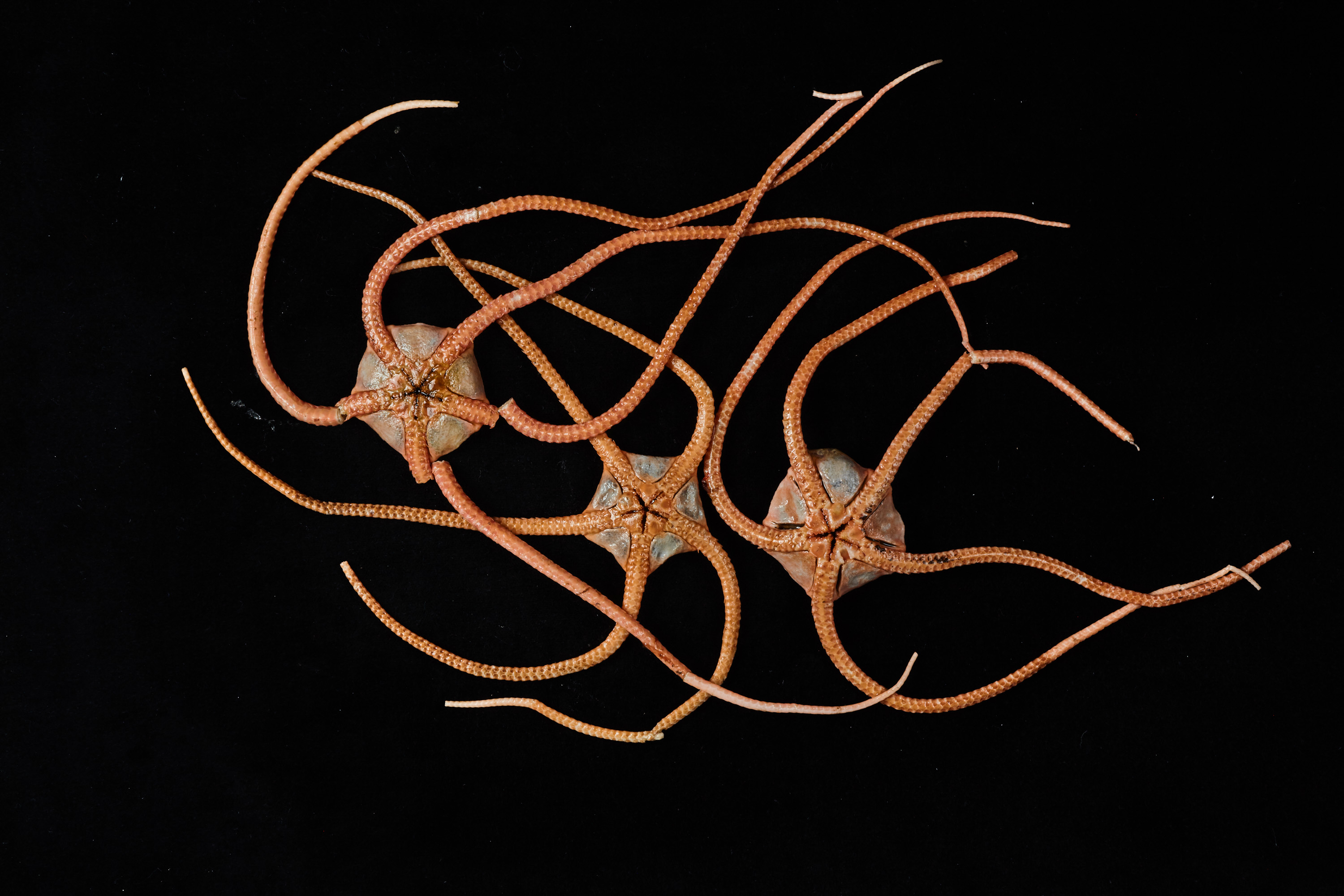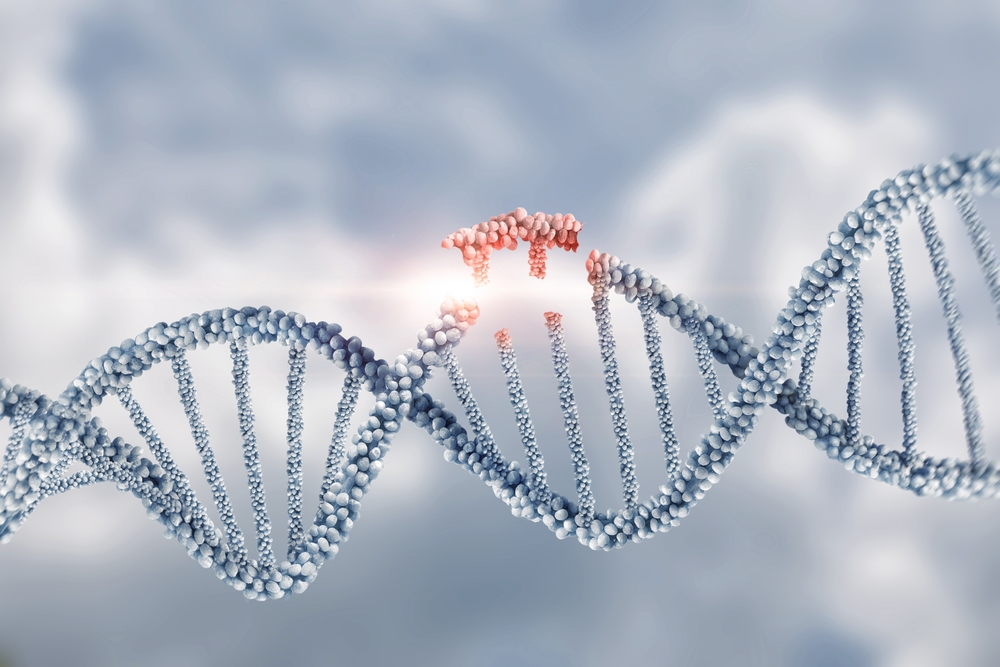Vue lecture
People Sweat Differently Than Traditionally Thought, Perspiring in Pools Not Droplets

Ancient Migration Routes That Were Swallowed by the Sea Once Led Ancient Humans Outside of Africa

A 518-Million-Year-Old Ancient Squid-Like Creature Had “Complex Camera Eyes”

Paleolithic Children Played with Mud Balls and Tried to Knock Down Cave Formations

Congressional panels resist White House proposals for sharp cuts in indirect cost rates
‘Things keep evolving into anteaters.’ Odd animals arose at least 12 separate times
Join Our Next Livestream: Inside Katie Drummond’s Viral Interview With Bryan Johnson

Navigating the shift to commercial space stations

In this bonus edition of Space Minds, host David Ariosto speaks with Robyn Gatens, NASA's Director for the International Space Station, live at the AIAA Ascend conference in Las Vegas on the status of the International Space Station, its planned decommissioning by 2030 and the expected follow-on commercial space stations.
The post Navigating the shift to commercial space stations appeared first on SpaceNews.
Deep learning classifies tissue for precision medicine
Deep learning algorithms have been trained to classify different types of biological tissue, based purely on the tissue’s natural optical responses to laser light. The work was done by researchers led by Travis Sawyer at the University of Arizona in US, who hope that their new approach could be used in the future to diagnose diseases using optical microscopy.
Precision medicine is a fast-growing field whereby medical treatments are tailored to individual patients – taking factors like genetics and lifestyle into account. A key part of this process is phenotyping, which involves identifying the molecular characteristics of diseased tissues.
Previously, phenotyping most often involved labelling tissues with fluorescent biomarkers, which allowed clinicians to create clear medical images using optical microscopy. However, the process of labelling tissues is often invasive, expensive and time-consuming, limiting its accessibility in practical treatments.
More recently, advances have been made in label-free imaging, which can phenotype tissues by observing how they interact with laser light. This is difficult, however, because tissues will often display complex nonlinear responses in the light they emit, which are deeply intertwined with their surrounding molecular environments. As Sawyer explains, this creates a whole new set of challenges.
Altering abundance
“In general, the potential of label-free imaging has been limited by a lack of specificity in understanding what is producing the measured signal,” he says. “This is because many different high-level disease processes can lead to an altering abundance of downstream measurable biomarkers.”
Sawyer’s team addressed these challenges by exploring how deep learning algorithms could be trained to recognize these nonlinear optical responses, and identify them in microscopy images.
To do this, they used a technique called spatial transcriptomics, which maps out variations in RNA levels across tissue samples. RNA molecules carry copies of the instructions stored in DNA, offering a snapshot of gene activity in different regions of tissue.
Alongside transcriptomics data from six different types of tissue, the team also probed the samples with two different optical microscopy techniques. These are autofluorescence, which detects the specific frequencies of molecules excited by a laser, providing details on the tissue’s composition; and second harmonic generation, which detects highly ordered structures (such as collagen) by capturing photons they emit at twice the frequency of a laser probe.
One-to-one matching
The researchers then co-registered these label-free microscopy images with their spatial transcriptomics data. “This allowed us to match one-to-one the transcriptomic signature of a small area of tissue with a surrounding image region capturing the microenvironment of the tissue,” Sawyer explains. “The transcriptomic signature was used to generate tissue and disease phenotypes.”
Based on these simultaneous measurements, the team developed a deep learning algorithm that could accurately predict the unique phenotypes of each tissue. Once trained, the model could classify tissues using only the label-free microscopy images, without any need for transcriptomics data from the samples being studied. “Using deep learning, we were able to accurately predict tissue phenotypes defined by the transcriptomic signature to almost 90% accuracy using label-free microscopy images,” Sawyer says.
Compared with classical image analysis algorithms, the team’s deep learning approach was vastly more reliable in predicting tissue characteristics. This showcased the need to account for the influence of tissues’ surrounding environments on their optical responses.
For now, the technique is still in its early stages, and will require assessments with far larger groups of patients, and with other types of tissue and diseases before it can be applied clinically. Still, the team’s results are a promising step towards label-free imaging, which could have important implications for precision medicine.
“This could lead to transformative technology that could have major clinical impact by enabling precision medicine approaches, in addition to basic science applications by allowing minimally invasive and longitudinal measurement of biological signatures,” Sawyer explains.
The technique is described in Biophotonics Discovery.
The post Deep learning classifies tissue for precision medicine appeared first on Physics World.
Blue Origin to fly first Blue Ring spacecraft in spring 2026

Blue Origin will fly the first mission of its Blue Ring spacecraft next spring carrying a space situational awareness payload from Scout Space.
The post Blue Origin to fly first Blue Ring spacecraft in spring 2026 appeared first on SpaceNews.
Senegal signs the Artemis Accords

Senegal is the latest country to sign the Artemis Accords, a move that some believe could help the United States blunt growing Chinese influence in Africa.
The post Senegal signs the Artemis Accords appeared first on SpaceNews.
Industry warns of severe consequences from ISS funding cuts

Industry officials issued a stark warning that proposed NASA budget cuts to the International Space Station could jeopardize both the operation of the station and the transition to commercial stations.
The post Industry warns of severe consequences from ISS funding cuts appeared first on SpaceNews.
Squid use Bragg reflectors in their skin to change colour
Cephalopods such as squid and octopus can rapidly change the colour of their skin, but the way they do it has been something of a mystery – until now. Using a microscopy technique known as holotomography, scientists in the US discovered that the tuneable optical properties of squid skin stem from winding columns of platelets in certain cells. These columns have sinusoidal-wave refractive index profiles, and they function as Bragg reflectors, able to selectively transmit and reflect light at specific wavelengths.
“Our new result not only helps advance our understanding of structural colouration in cephalopods skin cells, it also provides new insights into how such gradient refractive index distributions can be leveraged to manipulate light in both biological and engineered systems,” says Alon Gorodetsky of the University of California, Irvine, who co-led this research study together with then-PhD student Georgii Bogdanov.
Stacked and winding columns of platelets
In their study, Gorodetsky, Bogdanov and colleagues including Roger Hanlon of the Marine Biological Laboratory (MBL) in Woods Hole, Massachusetts, examined the iridescent cells (iridophores) and cell clusters (splotches) responsible for producing colours in longfin inshore squids (Doryteuthis pealeii). To do this, they used holotomography, which creates three-dimensional images of individual cells and cell clusters by measuring subtle changes in a light beam as it passes through a sample of tissue. From this, they were able to map out changes in the sample’s refractive index across different structures.
The holotomography images revealed that the iridophores comprise stacked and winding columns of platelets made from a protein known as reflectin, which has a high refractive index, alternating with a low-refractive-index extracellular space. These Bragg-reflector-like structures are what allow tissue in the squid’s mantle to switch from nearly transparent to vibrantly coloured and back again.
Other natural Bragg reflectors
Squids aren’t the only animals that use Bragg reflectors for structural colouration, Gorodetsky notes. The scales of Morpho butterflies, for example, get their distinctive blue colouration from nanostructured Bragg gratings made from alternating high-refractive-index lamellae and low-refractive-index air gaps. Another example is the panther chameleon. The skin cells of this famously colour-changing reptile contain reconfigurable photonic lattices consisting of high-refractive-index nanocrystals within a low-refractive-index cytoplasm. These structures allow the animal to regulate its temperature as well as change its colour.
Yet despite these previous findings, and extensive research on cephalopod colouration, Gorodetsky says the question of how squid splotch iridophores can change from transparent to colourful , while maintaining their spectral purity, had not previously been studied in such depth. “In particular, the cells’ morphologies and refractive index distributions in three dimensions had not been previously resolved,” he explains. “Overcoming the existing knowledge gap required the development and application of combined experimental and computational approaches, including advanced imaging, refractive index mapping and optical modelling.”
Extending to infrared wavelengths
After using advanced computational modelling to capture the optical properties of the squid cells, the researchers, who report their work in Science, built on this result by designing artificial nanomaterials inspired by the natural structures they discovered. While the squid iridophores only change their visible appearance in response to neurophysiological stimuli, the researchers’ elastomeric composite materials (which contain both nanocolumnar metal oxide Bragg reflectors and nanostructured metal films) also change at infrared wavelengths.
Composite materials like the ones the UC Irvine-MBL team developed could have applications in adaptive camouflage or fabrics that adjust to hot and cold temperatures. They might also be used to improve multispectral displays, sensors, lasers, fibre optics and photovoltaics, all of which exploit multilayered Bragg reflectors with sinusoidal-wave refractive index profiles, says Gorodetsky.
The researchers now plan to further explore how gradient refractive index distributions contribute to light manipulation in other biological systems. “We also hope to refine our engineered multispectral composite materials to enhance their performance for specific practical applications, such as advanced camouflage and other wearable optical technologies,” Gorodetsky tells Physics World.
The post Squid use Bragg reflectors in their skin to change colour appeared first on Physics World.
The First Planned Migration of an Entire Country Is Underway

Columbia’s $221 million deal with Trump officials draws mixed reactions from researchers
This trilobite fossil became ancient Roman bling
Spiky, Star-Shaped Creatures Show the Deep Sea Is a "Connected Superhighway"

Airplane-Sized Asteroid Will Fly Past Earth Next Week, Sparing Us From an Impact

Toxic Algae in Whale Poop Warns of Warming Seas in the Alaskan Arctic

Once Believed to Be Junk, Viral Ancient DNA Has Been Ghost Writing Our Genetic Code

UK’s Spaceflux is building a catalog to plug space situational awareness gaps

LONDON — United Kingdom-based space surveillance company Spaceflux hopes to introduce a catalog of space objects next year, one that could rival data kept by the United States Space Force and provide satellite conjunction warnings if Europe’s relations with the U.S. were to deteriorate in the future. The company, which launched in 2022 is developing […]
The post UK’s Spaceflux is building a catalog to plug space situational awareness gaps appeared first on SpaceNews.